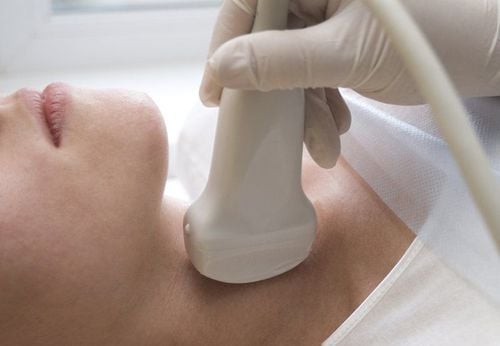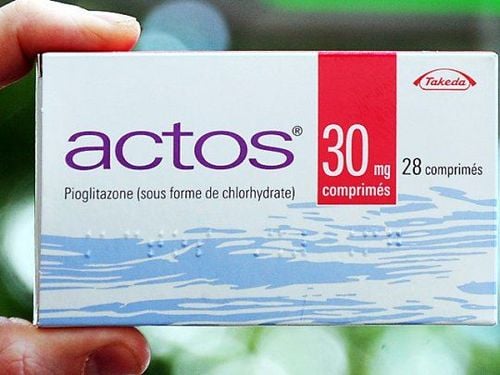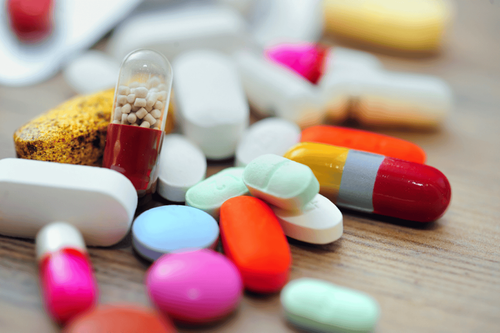This is an automatically translated article.
High blood sugar occurs when the body does not produce enough insulin or does not use insulin effectively. This is a hormone that regulates blood sugar levels and helps metabolize glucose for energy. Here are 15 easy ways to lower your blood sugar without medication.
1. Exercise regularly
Regular exercise can help you achieve and maintain a healthy weight and increase insulin sensitivity. The cells will then make better use of the available sugar in the blood. In addition, exercise also helps muscles use blood sugar for energy and muscle contraction.
If your blood sugar is not stable, you should check your blood sugar more often. Through this, you will learn how your body responds to different activities and keep your blood sugar from getting too high or too low.
Effective forms of exercise include: swimming, running, weightlifting, brisk walking, cycling, dancing, hiking, etc.
MORE: Carbohydrates and blood sugar
2. Limit carb intake
The body breaks down carbs into sugar (mostly glucose), then insulin helps the body use and store sugar for energy. When you eat too many carbs or you have problems with insulin function, blood sugar can rise.
The American Diabetes Association (ADA) recommends controlling your carb intake by counting carbs and knowing your needs. Some studies show that these methods also help you plan meals properly, improving blood sugar.
Low-carb diets not only help lower blood sugar levels, but also prevent blood sugar spikes, as well as help control blood sugar levels in the long term.
3. Increase fiber consumption
Fiber slows the digestion of carbs and the absorption of sugar, thereby helping blood sugar levels rise steadily, not suddenly. There are two types of fiber, insoluble and soluble fiber. Although both are important, soluble fiber has been shown to improve blood sugar control.
Additionally, a high-fiber diet may help better control type 1 diabetes. Foods rich in fiber include:
Vegetables Fruits Legumes Grains. The recommended daily fiber intake is about 25 grams for women and 38 grams for men. 14 grams of fiber is needed for a 1,000-calorie diet.

Chất xơ giúp giảm đường huyết trong máu
4. Drink enough water
Drinking enough water can help you keep your blood sugar within acceptable limits. In addition to preventing dehydration, drinking plenty of water also helps the kidneys excrete excess sugar through the urine. One observational study found that people who drank a lot of water had a lower risk of developing high blood sugar.
Drinking water regularly helps to hydrate the body, lower blood sugar and reduce the risk of diabetes. Water and zero-calorie beverages are best. Sugary drinks cause high blood sugar, weight gain, and an increased risk of diabetes.
MORE: Did you know: Normal blood sugar?
5. portion control
Portion control helps regulate calorie intake and maintain a healthy weight, thereby promoting healthy blood sugar levels and even reducing the risk of developing type 2 diabetes.
Portion limit also reduces calorie intake and avoids blood sugar spikes after meals. To reduce portion sizes, you can:
Weigh ingredients Use smaller plates Avoid buffet restaurants Read food labels carefully and check servings Keep a food diary Eat slowly.
6. Choose foods with a low glycemic index
The glycemic index reflects how the body absorbs or digests food, affecting how quickly blood sugar rises. Eating foods with a low glycemic index has been shown to lower blood sugar in people with diabetes.
Examples of foods with a low to moderate glycemic index include:
Barley Yogurt Oats Beans, lentils and legumes Wheat pasta Non-starchy vegetables.
7. Stress relief
Stress can affect your blood sugar levels due to stress hormones like glucagon and cortisol. One study found that exercise, relaxation, and meditation significantly reduced stress, as well as lower blood sugar levels. Exercises and relaxation methods such as yoga also help correct insulin secretion problems in patients with chronic diabetes.

Giảm căng thẳng để tránh đường huyết tăng cao
8. Blood sugar monitoring
Measuring and monitoring blood glucose levels can also help you better control the readings. For example, blood sugar monitoring helps you adjust your meals or medications accordingly.
This will also help you to know how your body reacts to certain foods. Try measuring your blood sugar level every day and keep track of the readings in a diary.
9. Get enough sleep
Getting enough sleep feels great and is necessary for good health. Not focusing on sleep and getting enough rest can also affect blood sugar and insulin sensitivity, increase cravings and promote weight gain.
Sleep deprivation inhibits the release of growth hormones and increases cortisol levels. Both play an essential role in blood sugar control. You need to make sure you get high-quality sleep each night, both in quantity and quality.
10. Add foods rich in chromium and magnesium
High blood sugar and diabetes are also linked to micronutrient deficiencies, including deficiencies of the minerals chromium and magnesium. Chromium plays an important role in the metabolism of carbs and fats, helping to regulate blood sugar levels. A lack of chromium can make you carb intolerant.
Several studies of people with diabetes show that chromium is beneficial in long-term blood sugar control. Foods rich in chromium include:
Meats Whole grains Fruits Vegetables Nuts. Magnesium has also been shown to benefit blood sugar levels, while magnesium deficiency has been linked to a higher risk of developing diabetes. According to research, individuals with high magnesium intake are up to 47% lower risk of developing type 2 diabetes.
Magnesium rich foods include:
Dark green leafy vegetables Pumpkin and pumpkin seeds Tuna Cereals Dark chocolate Bananas Butter Beans.
11. Try Apple Cider Vinegar
Apple cider vinegar has a lot of health benefits, including promoting lower fasting blood sugar, can cause the liver to reduce glucose production or increase the cells' ability to use glucose.
Furthermore, studies show that vinegar significantly affects the body's response to sugar and can improve insulin sensitivity. You can mix a little apple cider vinegar in water to drink before a high-carb meal or mix it with salad dressings. However, don't forget to consult your doctor before taking apple cider vinegar, especially if you are taking medication that lowers blood sugar.

Sử dụng giấm táo để giảm đường huyết
12. Try Cinnamon Extract
Cinnamon also has many health benefits, which have been shown to improve insulin sensitivity by limiting insulin resistance cells. Studies show that cinnamon can also lower blood sugar by up to 29%. This substance also slows down the breakdown of carbs in the digestive tract, helping to lower blood sugar levels after meals. However, it is not recommended to take too much cinnamon to avoid the associated risks.
13. Try berberine
Berberine is a component of an herb used in traditional Chinese medicine, including the treatment of diabetes. This substance has been shown to help lower blood sugar and enhance the breakdown of carbs for energy.
Furthermore, berberine may be just as effective as some blood sugar-lowering drugs. As a result, it is considered one of the most effective supplements for people with diabetes or pre-diabetes.
In addition, this substance can come with some side effects, such as:
Diarrhea Constipation Bloating Abdominal pain. Consult your doctor first if you are considering using berberine.
14. Eat fenugreek seeds
Fenugreek seeds are considered an excellent source of soluble fiber, which helps to effectively control blood sugar levels. Many studies have shown that fenugreek can effectively lower blood sugar in people with diabetes, as well as reduce fasting glucose levels and improve glucose tolerance.
Although uncommon, fenugreek can be added to baked goods to help treat diabetes. The recommended dose of fenugreek seeds is 2 - 5 grams per day.
15. Maintain a moderate weight
Maintaining a moderate weight will definitely help improve health and prevent future health problems. Weight control also promotes healthy blood sugar levels and has been shown to help reduce the risk of developing diabetes. Losing 7% of body weight will reduce the risk of developing diabetes by up to 58%, even better than a common diabetes drug.
Your waist circumference is the single most important factor for estimating diabetes risk. Waist circumference greater than 35 inches (88.9 cm) for women and more than 40 inches (101.6 cm) for men is associated with an increased risk of insulin resistance, high blood sugar, and type diabetes 2. Therefore, achieving a healthy waist measurement is even more important than overall weight.
Please dial HOTLINE for more information or register for an appointment HERE. Download MyVinmec app to make appointments faster and to manage your bookings easily.
Reference source: healthline.com













